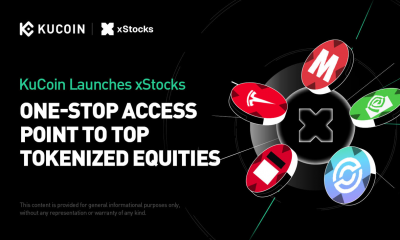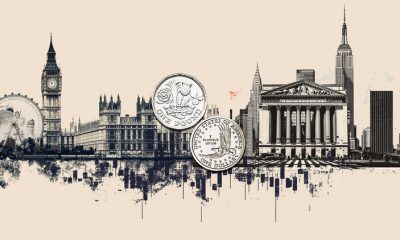

others
US Dollar keeps gains despite easing price pressures, uninspiring ECB rate decision – Crypto News
- The Greenback rallies for a third straight day this week.
- US yields continue to increase, nearing the 5% threshold again.
- The US Dollar Index edges up after breaking back above 106.00 and flirts with 107.00.
The US Dollar (USD) keeps gaining territory against most major G10 currencies this Thursday. The biggest catalyst for this recovery is the bond market where US yields in the US 10-year benchmark have found their way back to a near 5%. At the other side of the Atlantic Ocean, the European Central Bank (ECB) issued a rate decision with no surprises, delivering a steady-for-longer stance while markets await more verbal guidance from ECB President Christine Lagarde up next.
On the economic data front, no less than thirteen data points are set to be issued all at the same time, at 12:30 GMT. Amidst all that, the ECB will release its interest rate decision and statement and ECB President Christine Lagarde will give a press conference. Expect plenty of headlines to come out and very volatile moves in the US Dollar Index (DXY), in the EUR/USD pair and other major crosses where the Greenback is involved.
Daily digest: US Dollar outpaces Euro
- The European Central Bank (ECB) has kepts its benchmark rates unchaged at 4%, issuing a statement that it will keep its rate steady for longer to battle against the elevated inflation levels in the eurozone.
- At 12:30 GMT, a big batch of US data was released:
- Initial Jobless Claims came in at 210,000, an increase from 198,000. Continuing Claims went higher as well, from 1,727,000 to 1,790,000.
- Personal Consumption Expenditures (PCE) Price Index for the third quarter saw the Core Index dropping from 3.7% to 2.4%.
- Gross Domestic Product (GDP) data for the third quarter: the Price Index component went from 1.7% to 3.5%. The Annualised growth rate outperformed from 2.1% to 4.9%.
- Durable Goods preliminary reading for September: The headline index was a big beat on expectations, from -0.1% to 4.7%. The component without transportation was kept steady at 0.5% .
- Near 12:45 GMT, ECB President Christine Lagarde is due to give a press conference with Q&A.
- During that same press conference from the ECB, around 13:00 GMT, headlines or comments are expected from the Federal Reserve member Christopher Waller.
- US housing data around 14:00 GMT, with Pending Home Sales: Sales are expected to decline 1.5% in September compared with the previous month, less than the 7.1% plunge seen in August. On an annual basis, Pending Home Sales declined 18.3% in August.
- The Kansas City Fed Manufacturing Index for October is expected around 15:00 GMT. The previous reading came at -13.
- The US Treasury will try to refund two tenors this Thursday: at 15:30 a 4-week bill to be auctioned, and at 17:00 GMT a 7-year note to be allocated.
- Equities are seeing investors flee ahead of the volatility this Thursday: Asian equities are sinking over 1% in Japan and Chinese equities are down by 0.5%. European equities are not expecting any help from the ECB this Thursday, and are sliding more than 1% . In the US, Nasdaq futures fall by 1.5%, while Dow Jones and S&P 500 futures are down by 1%.
- The CME Group’s FedWatch Tool shows that markets are pricing in a 97.1% chance that the Federal Reserve will keep interest rates unchanged at its meeting in November.
- The benchmark 10-year US Treasury yield trades at 4.98%, popping back to that feared 5% level. The million Dollar question here is what will happen once the benchmark breaks back above 5%.
US Dollar Index technical analysis: More room to go
The US Dollar is climbing the ladder again after being in the gutter at the start of the week. The Greenback is on its way back to its throne as the DXY US Dollar Index is shooting higher and might even stretch further. Risk element hanging over a possible implosion of the DXY hangs in the balance, with the US 10-year yield flirting again with 5%.
The DXY has consolidated above 106.00 and looks to keep stretching higher. Look for a possible jump above 106.92. If this level can be reclaimed by US Dollar bulls, then look for 107.00 on the topside again.
On the downside, the recent resistance at 105.88 did not do a good job supporting any downturn and now completely has lost its importance. Instead, look for 105.12, which is a pivotal historic line and almost falls in line with the 55-day Simple Moving Average (SMA) to keep the DXY above 105.00, and which worked already quite ahead of it on Tuesday. Should this level fail to do the trick, a big air pocket could develop and see the DXY drop to 103.74, near the 100-day SMA, before finding ample support.
ECB FAQs
The European Central Bank (ECB) in Frankfurt, Germany, is the reserve bank for the Eurozone. The ECB sets interest rates and manages monetary policy for the region.
The ECB primary mandate is to maintain price stability, which means keeping inflation at around 2%. Its primary tool for achieving this is by raising or lowering interest rates. Relatively high interest rates will usually result in a stronger Euro and vice versa.
The ECB Governing Council makes monetary policy decisions at meetings held eight times a year. Decisions are made by heads of the Eurozone national banks and six permanent members, including the President of the ECB, Christine Lagarde.
In extreme situations, the European Central Bank can enact a policy tool called Quantitative Easing. QE is the process by which the ECB prints Euros and uses them to buy assets – usually government or corporate bonds – from banks and other financial institutions. QE usually results in a weaker Euro.
QE is a last resort when simply lowering interest rates is unlikely to achieve the objective of price stability. The ECB used it during the Great Financial Crisis in 2009-11, in 2015 when inflation remained stubbornly low, as well as during the covid pandemic.
Quantitative tightening (QT) is the reverse of QE. It is undertaken after QE when an economic recovery is underway and inflation starts rising. Whilst in QE the European Central Bank (ECB) purchases government and corporate bonds from financial institutions to provide them with liquidity, in QT the ECB stops buying more bonds, and stops reinvesting the principal maturing on the bonds it already holds. It is usually positive (or bullish) for the Euro.
-
others1 week ago
Will Ethereum Price Rally to $3,200 as Wall Street Pivots from BTC to ETH – Crypto News
-
![DIS Elliott Wave technical analysis [Video]](https://dripp.zone/news/wp-content/uploads/2025/06/DIS-Elliott-Wave-technical-analysis-Video-Crypto-News-400x240.jpg)
![DIS Elliott Wave technical analysis [Video]](https://dripp.zone/news/wp-content/uploads/2025/06/DIS-Elliott-Wave-technical-analysis-Video-Crypto-News-80x80.jpg) others1 week ago
others1 week agoSkies are clearing for Delta as stock soars 13% on earnings beat – Crypto News
-
![DIS Elliott Wave technical analysis [Video]](https://dripp.zone/news/wp-content/uploads/2025/06/DIS-Elliott-Wave-technical-analysis-Video-Crypto-News-400x240.jpg)
![DIS Elliott Wave technical analysis [Video]](https://dripp.zone/news/wp-content/uploads/2025/06/DIS-Elliott-Wave-technical-analysis-Video-Crypto-News-80x80.jpg) others1 week ago
others1 week agoSkies are clearing for Delta as stock soars 13% on earnings beat – Crypto News
-

 Blockchain1 week ago
Blockchain1 week agoInsomnia Labs Debuts Stablecoin Credit Platform for Creators – Crypto News
-

 Blockchain1 week ago
Blockchain1 week agoAnt Group Eyes USDC Integration Circle’s: Report – Crypto News
-

 Cryptocurrency1 week ago
Cryptocurrency1 week agoTornado Cash Judge Won’t Let One Case Be Mentioned in Roman Storm’s Trial: Here’s Why – Crypto News
-

 Blockchain1 week ago
Blockchain1 week agoXRP Rally Possible If Senate Web3 Crypto Summit Goes Well – Crypto News
-

 others1 week ago
others1 week agoUSD/CAD trades with positive bias below 1.3700; looks to FOMC minutes for fresh impetus – Crypto News
-
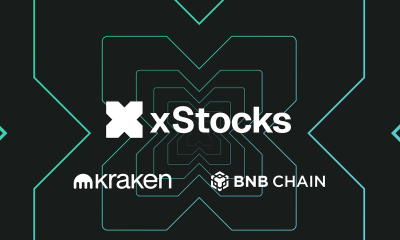
 Blockchain1 week ago
Blockchain1 week agoKraken and Backed Expand Tokenized Equities to BNB Chain – Crypto News
-
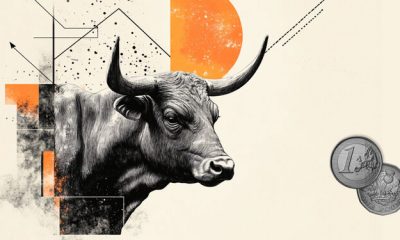
 others1 week ago
others1 week agoEUR/GBP posts modest gain above 0.8600 ahead of German inflation data – Crypto News
-

 Cryptocurrency1 week ago
Cryptocurrency1 week agoBitcoin Breaks New Record at $111K, What’s Fueling the $120K Price Target? – Crypto News
-
Technology1 week ago
XRP Eyes $3 Breakout Amid Rising BlackRock ETF Speculation – Crypto News
-
Business7 days ago
PENGU Rallies Over 20% Amid Coinbase’s Pudgy Penguins PFP Frenzy – Crypto News
-

 Blockchain5 days ago
Blockchain5 days agoRobinhood Dealing With Fallout of Tokenized Equities Offering – Crypto News
-

 Cryptocurrency4 days ago
Cryptocurrency4 days agoWhale Sells $407K TRUMP, Loses $1.37M in Exit – Crypto News
-
Technology1 week ago
Solana Meme Coin PNUT Rallies 10% Amid Elon Musk’s Statement – Crypto News
-
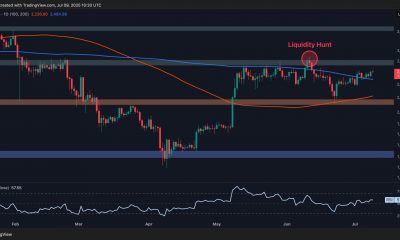
 Cryptocurrency1 week ago
Cryptocurrency1 week agoIs ETH Finally Ready to Shoot For $3K? (Ethereum Price Analysis) – Crypto News
-

 Blockchain1 week ago
Blockchain1 week agoBinance Founder Backs BNB Treasury Company Aiming For US IPO – Crypto News
-

 Blockchain1 week ago
Blockchain1 week agoEthereum Bulls Roar — $3K Beckons After 5% Spike – Crypto News
-
Business1 week ago
Did Ripple Really Win XRP Lawsuit Despite $125M Fine? Lawyer Fires Back at CEO – Crypto News
-

 Cryptocurrency1 week ago
Cryptocurrency1 week agoXRP price forecast as coins surges 2.19% to $2.33 – Crypto News
-

 Technology1 week ago
Technology1 week agoPerplexity launches Comet, an AI-powered browser to challenge Google Chrome; OpenAI expected to enter the space soon – Crypto News
-

 Blockchain1 week ago
Blockchain1 week agoSUI Chart Pattern Confirmation Sets $3.89 Price Target – Crypto News
-
Technology1 week ago
Breaking: SharpLink Purchases 10,000 ETH from Ethereum Foundation, SBET Stock Up 7% – Crypto News
-

 others7 days ago
others7 days agoEUR/GBP climbs as weak UK data fuels BoE rate cut speculation – Crypto News
-

 Blockchain7 days ago
Blockchain7 days agoBitcoin Hits All-Time High as Crypto Legislation Votes Near – Crypto News
-
Technology1 week ago
GameSquare Stock Shoots 58% After Revealing $100 Million Ethereum Treasury Strategy – Crypto News
-
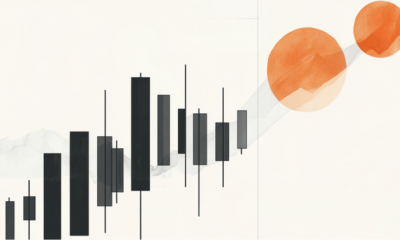
 others1 week ago
others1 week agoAustralian Dollar remains stronger due to persistent inflation risks, FOMC Minutes eyed – Crypto News
-

 others1 week ago
others1 week agoUS Dollar Resurgence May Be Around the Corner, According to Barclays Currency Strategist – Here’s Why: Report – Crypto News
-
others1 week ago
Trump Jr. Backed Thumzup Media To Invest In ETH, XRP, SOL, DOGE And LTC – Crypto News
-
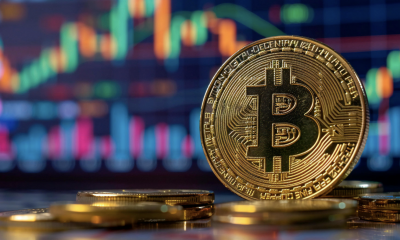
 Cryptocurrency1 week ago
Cryptocurrency1 week agoBitcoin Hits Record Peak. How High Can It Surge in 2025? – Crypto News
-
Technology1 week ago
VC Firm Ego Death Capital Closes $100M Funding to Back Bitcoin-Based Projects – Crypto News
-
Cryptocurrency1 week ago
Tokenized Securities Are Still Securities, US SEC Warns Robinhood, Kraken – Crypto News
-

 others1 week ago
others1 week agoNovaEx Launches with a Security-First Crypto Trading Platform Offering Deep Liquidity and Institutional-Grade Infrastructure – Crypto News
-

 Blockchain1 week ago
Blockchain1 week agoAustralia Banks Join Digital Currency Trial for Tokenized Assets – Crypto News
-

 Metaverse1 week ago
Metaverse1 week agoHow Brands Can Deepen Customer Connections in the Metaverse – Crypto News
-

 others1 week ago
others1 week agoAnthony Scaramucci Says $180,000 Bitcoin Price Explosion Possible As BTC ‘Supremacy’ Creeps Up – Here’s His Timeline – Crypto News
-

 Cryptocurrency1 week ago
Cryptocurrency1 week agoBitcoin Breaks New Record at $111K, What’s Fueling the $120K Price Target? – Crypto News
-
Business1 week ago
US Senate To Release CLARITY Act Draft Next Week – Crypto News
-

 others1 week ago
others1 week ago$687,220,000 in Bitcoin Shorts Liquidated in Just One Hour As BTC Explodes To $116,000 – Crypto News
-

 Business7 days ago
Business7 days agoS&P Global Downgrades Saks Global’s Credit Rating – Crypto News
-

 Cryptocurrency4 days ago
Cryptocurrency4 days agoSatoshi-Era Bitcoin Whale Moves Another $2.42 Billion, What’s Happening? – Crypto News
-

 Technology1 week ago
Technology1 week agoGoogle’s worst nightmare? OpenAI’s new AI web browser is coming soon to challenge Chrome – Crypto News
-

 Technology1 week ago
Technology1 week ago10 Smartchoice tablets from top brands, curated for everyday use, up to 45% off before Amazon Prime Day Sale – Crypto News
-
others1 week ago
China’s Ant Group With 1.4B Users Taps Circle to Integrate USDC – Crypto News
-

 Blockchain5 days ago
Blockchain5 days agoZiglu Faces $2.7M Shortfall as Crypto Fintech Enters Special Administration – Crypto News
-

 Cryptocurrency1 week ago
Cryptocurrency1 week agoBitcoin crash narrative returns as geopolitical tensions mount – Crypto News
-

 Cryptocurrency1 week ago
Cryptocurrency1 week agoEthereum ascends: Institutional pivot and dormant whale moves signal a new era – Crypto News
-
Business1 week ago
XRP Open Interest Skyrockets Ahead Of ProShares XRP ETF Approval – Crypto News
-
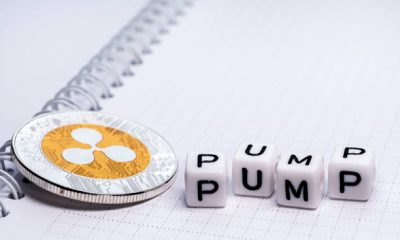
 Blockchain1 week ago
Blockchain1 week agoAnalyst Predicts 50% “Moonshot” For XRP Price If This Line Breaks – Crypto News

